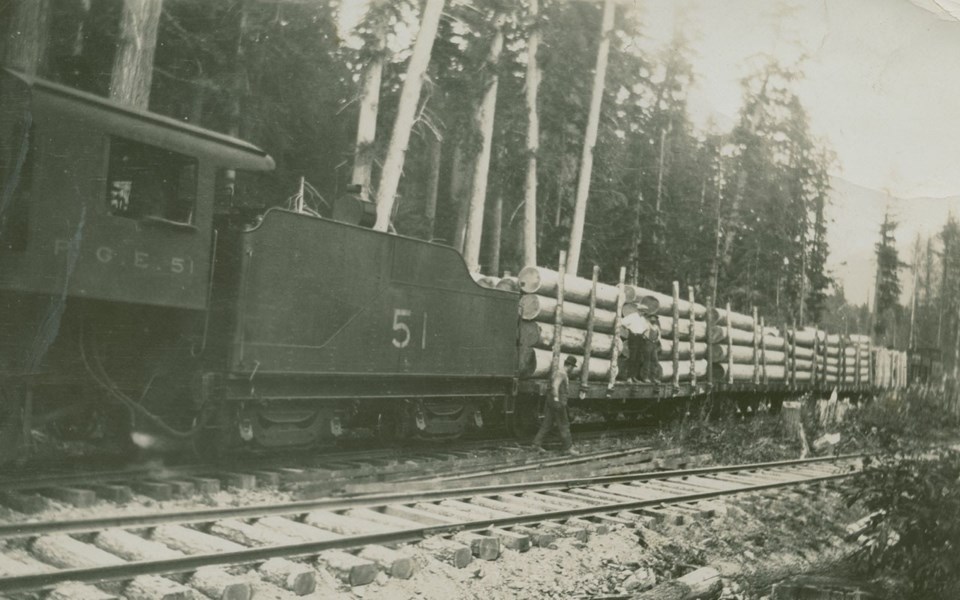If you've ever been out hiking near the train tracks on the western side of Whistler, you know how difficult the terrain can be. The cliffs, creeks, and rivers running through the valley make for beautiful scenery and photographs, but they can make travel very difficult. As a result, building a railway from coastal British Columbia to the Interior was an expensive, difficult venture, and it took a long time to build the rail line that exists today.
The first company planning to build a railway from coastal B.C. to the B.C. Interior was incorporated in 1891, but not much came of it. Once the Howe Sound and Northern Railway Company (HSN) was incorporated in 1907, however, things really started moving in the right direction. Surveys from Squamish through the Cheakamus Canyon were conducted in secret by the Cleveland and Cameron engineering firm, and the demand for a railway into the B.C. Interior was very high.
When a feasibility report was published by the HSN Railway Company in 1909, it was the talk of the town, making headlines in the Daily Province newspaper. The feasibility report announced that the construction of a railway through the Cheakamus Canyon was possible, and the first rails were laid that very same year.
The HSN Railway was taken over by the Foley, Welch, and Stewart Firm in 1912. It renamed the company the Pacific Great Eastern Railway (PGE), and within a year of the new company's incorporation, track was being laid on two separate sections of the route. The PGE Squamish Line finally reached Pemberton in October of 1914. The new railway brought many opportunities for people in the Whistler Valley, especially Alex and Myrtle Philip. Their Rainbow Lodge opened the same year the railway reached Pemberton, and they received a lot of encouragement from the PGE workers to host fishing tours. The first tours were held in May of 1915, and fishermen, with rods and tackle in hand, arrived by train to stay at Rainbow Lodge.
Expansion of the rail line continued, but not without difficulty. The PGE line from Squamish reached as far as Lillooet, but going further was a financial problem. The B.C. government stepped in, and the PGE received a loan of $10 million ($200 million in today's currency) in order to continue extending the rail line in 1916. The money didn't help much, though, and in 1918, the PGE was forced to default on the loan. The provincial government took over the PGE Railway Company, but due to the expensive nature of the project, the rail company was listed for public sale in 1924—there were no takers.
Despite everything, the railway pushed on. The province undertook a $10 million redevelopment program for the PGE in 1949 (over $110 million in today's currency). It took a lot of work, a lot of money, and a lot of time, but the PGE did eventually reach its destination. Finally, after over 50 years of planning and development, the PGE Railway reached Prince George on Sept. 11, 1952.
If you would like to learn more about the influence the PGE had on Whistler, stay tuned for future articles!




